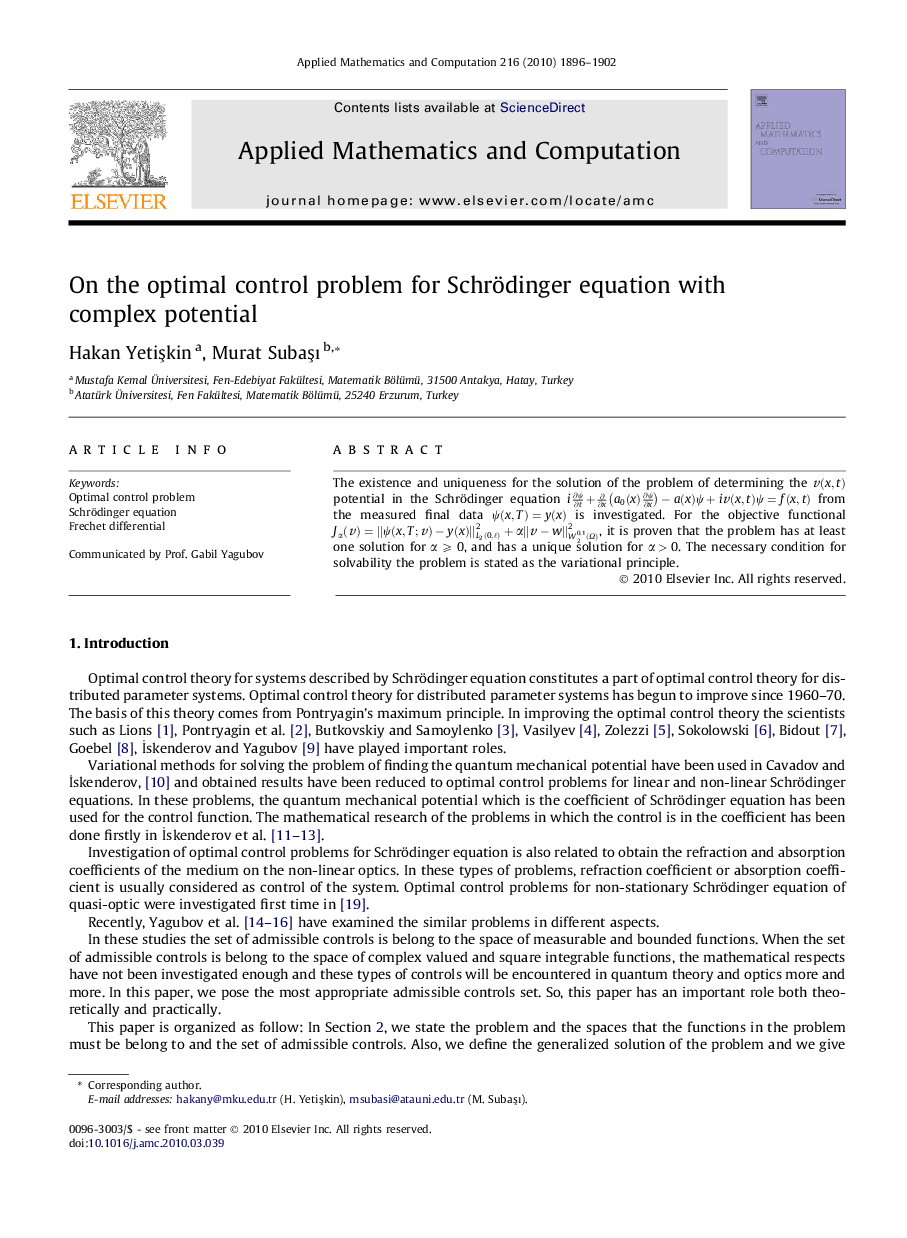| Article ID | Journal | Published Year | Pages | File Type |
|---|---|---|---|---|
| 4632606 | Applied Mathematics and Computation | 2010 | 7 Pages |
Abstract
The existence and uniqueness for the solution of the problem of determining the v(x,t)v(x,t) potential in the Schrödinger equation i∂ψ∂t+∂∂xa0(x)∂ψ∂x-a(x)ψ+iv(x,t)ψ=f(x,t) from the measured final data ψ(x,T)=y(x)ψ(x,T)=y(x) is investigated. For the objective functional Jα(v)=‖ψ(x,T;v)-y(x)‖L2(0,ℓ)2+α‖v-w‖W20,1(Ω)2, it is proven that the problem has at least one solution for α⩾0α⩾0, and has a unique solution for α>0α>0. The necessary condition for solvability the problem is stated as the variational principle.
Keywords
Related Topics
Physical Sciences and Engineering
Mathematics
Applied Mathematics
Authors
Hakan Yetişkin, Murat Subaşı,
